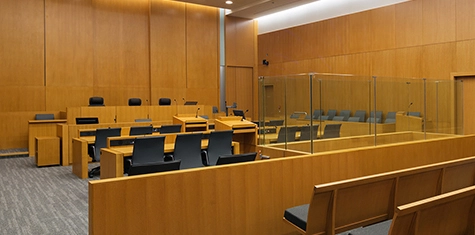Summary of Key Changes
In the final hours of the 2024 Legislative Session, the Minnesota Legislature passed the Agriculture and Energy Omnibus Bill (2024 Permitting Reform Legislation or Legislation), which contained some of the most significant energy permitting policy reform of the last 50 years. Governor Tim Walz is expected to sign the Legislation in the coming days.
The most significant changes include:
- Reducing the types of energy projects that must obtain a certificate of need (CN) from the Minnesota Public Utilities Commission (MPUC or Commission) (effective the day following enactment);
- Replacing Minnesota’s Power Plant Siting Act (Minn. Stat. Ch. 216E) with a new “Minnesota Energy Infrastructure Permitting Act” (Minn. Stat. Ch. 216I) that consolidates permitting requirements for energy facilities currently found in multiple existing statutes and rules into one new chapter;
- Modernizing the Commission’s site and route permit processes into new categories: Major Review and Standard Review, reducing procedural steps and shortening the overall permitting timeline;
- Moving the Environmental Review and Analysis Staff (EERA) from the Minnesota Department of Commerce to the Commission (effective July 1, 2025);
- Shortening notice timelines for incumbent electric transmission owners under Minnesota’s Right of First Refusal requirements for transmission projects approved through the Midcontinent Independent System Operator (MISO) process; and
- Requiring the Commission to complete (i) an environmental impact statement (EIS) under the Minnesota Environmental Policy Act, Minn. Stat. Ch. 116D and Minn. R. 4410, for all carbon dioxide (CO2) pipelines, and (ii) a general study evaluating specific issues related to routing CO2 pipelines.
The certificate of need and siting/routing related changes in the 2024 Permitting Reform Legislation will have a major impact on wind, solar, battery and transmission projects permitted in Minnesota in the coming years. Most of these changes are the result of a comprehensive stakeholder process initiated by the Commission last fall to identify permitting reform proposals that will help Minnesota meet the ambitious 100% Carbon-free Energy Standards passed in 2023. This stakeholder group identified more than a dozen specific improvements that could be made to shorten the Commission’s overall permitting timeline without sacrificing important stakeholder engagement and public input opportunities that have been the cornerstone for the Commission’s permitting process since passage of the original Power Plant Siting Act in 1973.
Given the breadth of the changes, project proposers and other stakeholders are encouraged to read the Legislation in its entirety and consult with legal counsel regarding project-specific questions. The following summary is intended to highlight major changes but does not comprehensively address all of the changes contained in the more than 80 pages of relevant legislation.
Also note that, facing a midnight deadline, the Tax Conference Committee rushed to salvage eight remaining bills by incorporating their provisions into a single bill, the 2024 Supplemental Budget Bill (HF 5247). This omnibus bill also includes the entire Agriculture and Energy Omnibus Bill. SF 4942 and HF 5247 contain identical versions of the permitting reform provisions. At the time of this update, it is unclear which version Governor Walz will sign. Check the final status of the bills when citing the 2024 Permitting Reform Legislation.
New Certificate of Need Exemptions
Wind, Solar and Energy Storage Projects
The Legislation makes several significant changes to certificate of need requirements for energy infrastructure projects. In the 2023 Legislative session, the Legislature created an exemption for wind and solar projects when an independent power producer submits a site permit application for the facility to the Commission. This exemption is maintained in the 2024 Legislation. In addition, the Legislation allows utilities proposing wind or solar facilities to meet the state’s Carbon-free Energy Standards to avoid a full CN and instead apply for a more condensed process which will review whether the proposed resource is a reasonable and prudent approach to meeting the utility’s obligations under Minn. Stat. § 216B.1691. The Legislation also codifies existing law by specifically noting that a CN is not required for energy storage projects.
Transmission Lines
The 2024 Legislation significantly reduces the number of transmission line projects that must obtain a CN. Generally speaking, under the new Legislation, only the following transmission line projects must still obtain a CN from the Commission prior to construction:
- High voltage transmission lines with a capacity greater than 300 kV and more than one mile of length in Minnesota; and
- High voltage transmission lines with a capacity of 100 kV or more and more than 10 miles of length in Minnesota.
These two categories reflect several major changes from existing law. For example:
- Transmission lines less than one mile in length do not require a CN;
- The CN requirement for any transmission line 100 kV or greater that crosses a state line has been eliminated; and
- The Legislation removes the CN requirement for transmission lines between 200 kV and 300 kV unless the line is more than 10 miles in length in Minnesota.
In addition, new CN exemptions are added for the following:
- Transmission lines that directly interconnect wind, solar or energy storage systems to the existing transmission grid; and
- Transmission lines that relocate an existing high voltage transmission line to new right-of-way as long as the new structures are not designed for and capable of operation at a higher voltage.
These CN provisions are effective immediately (following signature by the governor). Accordingly, applicants with pending applications for projects that would no longer require a CN under the new law should consult with legal counsel regarding how to best proceed.
Site Permit and Route Permit Changes for Energy Infrastructure Projects
The most significant changes in the 2024 Legislation rewrite Minnesota’s existing site and route permit procedures, creating two primary processes for permitting the state’s energy infrastructure facilities in future years.
Under the Legislation, the Commission’s permitting processes for wind, solar, transmission, electric generation and energy storage systems are consolidated into two primary processes: (1) Major Review and (2) Standard Review.
Major Review is reserved for most non-renewable electric generating facilities greater than 80 MWs in size and high voltage transmission line projects greater than 300 kV with more than 30 miles of length in Minnesota. Under the Major Review process, the Commission will prepare an environmental impact statement following the process established in Minn. Stat. §§ 216I.05 and 216I.06. Applicants only need to propose a single route as part of a route permit application, and the Commission may designate a portion of the hearing to be conducted as a contested case proceeding. The Commission must make a final decision in a Major Review proceeding within one year of the date the Commission determines the application is complete, although this timeline may be extended for up to three months for just cause or upon agreement of the applicant.
The Standard Review process will be used to permit wind, solar, energy storage and power plants of less than 80 MWs in size, transmission lines between 100 and 300 kV, transmission lines over 300 kV with less than 30 miles of length in Minnesota, and transmission lines over 300 kV if at least 80% of the distance of the line in Minnesota follows existing transmission rights-of-way. Under Standard Review, applicants will prepare and submit an environmental assessment as part of the initial application, and the Commission will prepare an addendum to analyze any additional issues or alternatives raised during scoping. The Commission must make a final decision under Standard Review within six months of determining an application is complete, although this timeline may be extended by up to three months for just cause or upon agreement of the applicant.
The Minnesota Energy Infrastructure Permitting Act (new Minn. Stat. Ch. 216I) contains numerous other clarifications to the Commission’s permitting process, including provisions related to pre-application outreach and coordination, permit amendments, opportunities for Commission applicability determinations, updates to the completeness and scoping processes, among many other changes. To facilitate improved coordination, staff from the EERA unit will be moving to the Commission.
All provisions related to the new Chapter 216I, including implementation of the Major Review and Standard Review processes, are effective July 1, 2025. Site and route permit applications received prior to July 1, 2025, will be processed under the existing law in Minn. Stat. Chs. 216E and 216F and Minn. R. Ch. 7850 and 7854.
Environmental Review and Study for Carbon Dioxide Pipelines
Under the Legislation, the Commission is required to prepare an EIS for all new CO2 pipelines that must obtain a route permit from the Commission. While pipeline permitting remains subject to the existing requirements of Minn. Stat. Ch. 216G and Minn. R. Ch. 7852, EISs for CO2 pipelines must be completed following the procedural requirements of the Minnesota Environmental Policy Act contained in Minn. Stat. Ch. 116D and Minn. R. Ch. 4410. This provision does not apply to other pipelines subject to the Commission’s route permit authority.
In addition to the EIS requirements, the Legislation contains a $1 million appropriation from the Renewable Development Fund to the Commission to complete a general study assessing the human health and environmental impacts related to construction, operation, and maintenance of CO2 pipelines. This report must be completed by November 1, 2026, and contain the following information: (1) geographic areas in Minnesota that are unsuitable sites for construction and operation of CO2 pipelines; (2) the amount of energy and water required to operate CO2 capture equipment; (3) the potential human and environmental impacts of a CO2 pipeline leak or rupture; (4) measures to mitigate the impact of CO2 pipeline leak or rupture; (5) long-term impacts of pipeline construction on wetlands, soils, crops and other vegetation; (6) the lifecycle greenhouse gas emissions resulting from CO2 pipelines; and (7) recommended provisions for state regulatory processes to site, operate, maintain and abandon CO2 pipelines.
Shortened ROFR Timelines
The Legislation shortens the period of time an incumbent utility electric transmission owner has to inform the Commission of its intent to construct a transmission line approved for construction by MISO (from 90 days to 60 days) and also shortens the period of time the utility has to then submit a certificate of need application for the related transmission line (from 18 months to 12 months). The intent of this language is to get transmission CN applications to the Commission more quickly after they’ve been approved through the MISO process, with the hope that this, too, will bring much needed transmission lines into service more quickly, particularly when coupled with the permitting reform discussed above. These provisions are likely to impact projects identified as part of MISO’s Long Range Transmission Planning (LRTP) Tranche 2 and subsequent projects.
Conclusion
For questions related to the 2024 Permitting Reform Legislation, please contact Christy Brusven at cbrusven@fredlaw.com or any member of Fredrikson’s Energy Regulation and Permitting or Government Relations teams.






